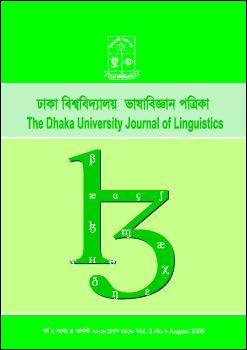Acquisition of Wh-movement in L2 Learning: A Cross-linguistic Analysis
Keywords:
Wh-movement, L2 Learning, Cross-linguistic, EnglishAbstract
Cross-linguistically different human languages bear different patterns of whconstructions. This evokes a common quarry: what happens when L2 learners of whconstruction are exposed to a language that allows distinct type of wh-patterns (whmovement or wh-in-situ either) from their L1? Will they show the equal competency like other L2 learners of wh-questions who experience the same type in their L1? In this paper, we take English L2 learners in our concern and argue that despite of having a common platform of UG, L2 learners of English with wh-in-situ L1 background generally face more difficulties than other L2 learners who experience wh-movement in their L1. We shall try to figure out a proposal for a gradient way to acquire wh-movement by saying that English L2 learners who have strong wh-movement features in their L1 perform better than L2 learners with wh-in-situ background who bear some kind of movement properties in their L1. In the same way, this weaker group shows better performance than the English L2 learners who do not experience any sort of whmovement in their L1. We shall use empirical evidence from different secondary sources to test this hypothesis and finally we shall try to sketch out our results.
Key Words: Wh-movement; L2 Learning; Cross-linguistic; English
DOI: 10.3329/dujl.v2i4.6907
Dhaka University Journal of Linguistics Vol.2(4) August 2009 pp.185-199
Downloads
403
542

